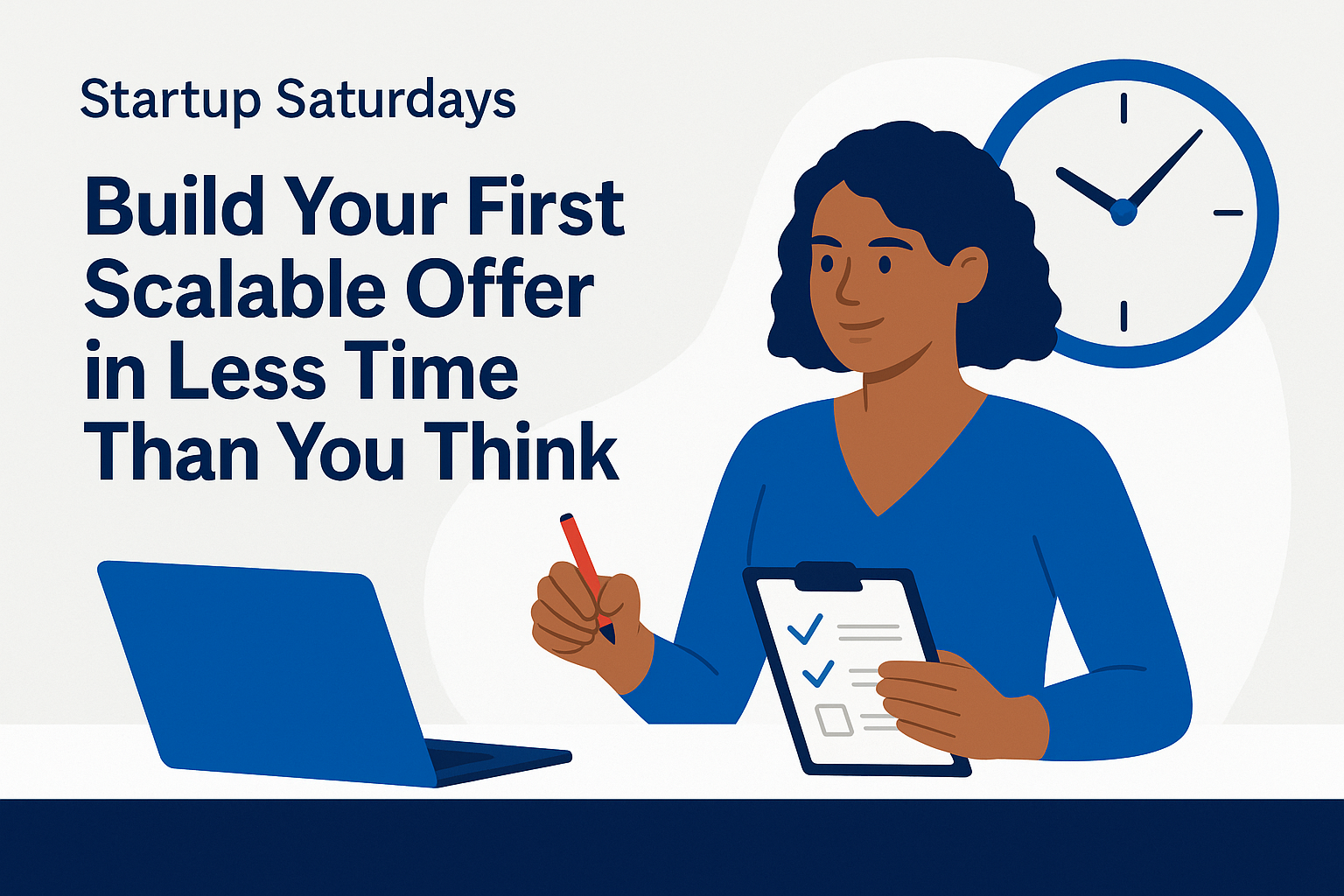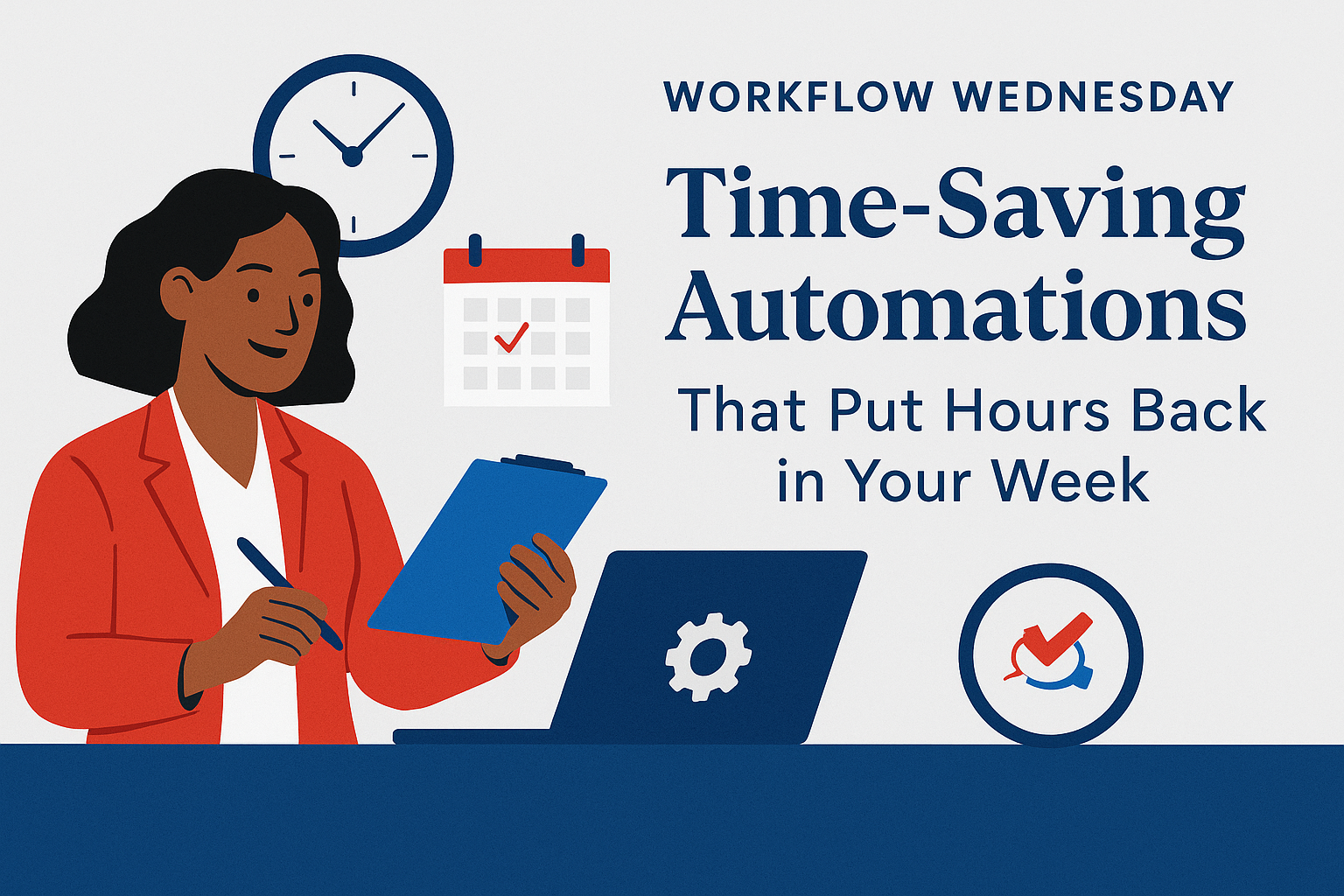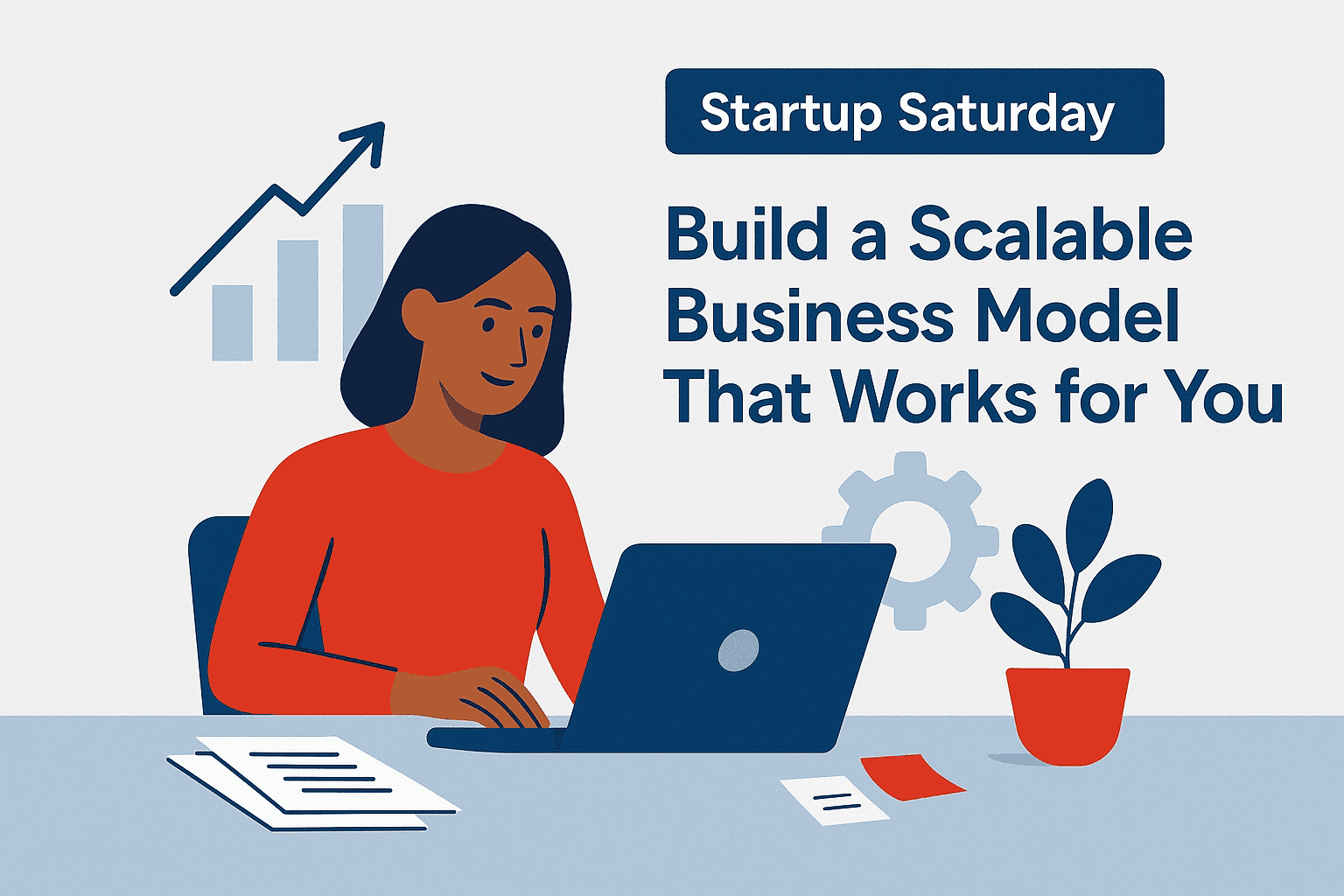Business automation benefits go beyond saving time—they unlock real entrepreneurial freedom. When I launched Backbone America, I knew from day one that I wanted automation at the core of everything I did. My goal wasn’t just to streamline my business—I wanted to empower other first-time entrepreneurs to do the same. I’d seen firsthand how overwhelming it is to run a business solo, especially in the early stages when hiring a team feels out of reach and you’re still proving your offer.
I wasn’t interested in trading a 9-to-5 job for a 24/7 hustle. I wanted to keep costs low, stay competitive, and build a business that worked with me, not against me. Automation was the way to do that.
If you’re tired of being chained to your daily to-do list, automation might be the breakthrough you’ve been waiting for. In this post, I’ll show you how to automate your business so you can scale faster, earn more, and finally enjoy the peace of mind you deserve—just like I did when I stepped back and rebuilt with intention.
What Is Business Automation?
Business automation uses tools, technology, and systems to complete tasks with little or no manual effort. From email marketing to client onboarding, automation reduces the time you spend on repetitive work—freeing you up to focus on what matters most: growing your business and serving your purpose.
When I automated my own backend processes—like scheduling, invoicing, and lead nurturing—I gained back hours every week. That time let me shift my focus from surviving the day to actually building out new content, courses, and tools that help other first-time entrepreneurs do the same.
Here are just a few common areas to automate:
- Email campaigns
- Appointment scheduling
- Lead generation and follow-up
- Invoicing and payment collection
- Project and task management
These systems aren’t about removing the human touch. They’re about removing bottlenecks so you can be more human where it matters most.
Why Automation Is the Key to Entrepreneurial Freedom
Many people start a business to escape the 9-to-5 grind. I did too. But here’s the truth: without automation, most entrepreneurs—myself included—end up trading one cage for another. You may be your own boss, but you’re also the overworked employee, the bookkeeper, the customer service rep, and the marketer… all rolled into one.
I was told I’d have to put in 50 to 60 hours a week to be successful. Even my mentor said this. It’s what he did. It’s what he saw others do. When we first met, he told me about holding client meetings early in the morning and late at night—constantly grinding to keep things moving.
I knew for certain: that wasn’t the life I wanted. No way.
And realistically, I couldn’t follow that path even if I wanted to. I was working full-time 10-hour shifts. I didn’t have the luxury of endless hours to build my business. But what I did have was clarity: if I was going to make entrepreneurship work for me, I’d need to build a business that respected my time from the start.
So I made automation my foundation.
Instead of wasting time on tasks that could run themselves, I spent a significant part of my startup phase building out systems—automated email flows, onboarding processes, client management tools—so my business wouldn’t take over my life.
Let me be clear: business automation benefits aren’t just about efficiency. They’re about liberation.
- Freedom to focus on the big picture.
- Freedom to rest.
- Freedom to grow—without burning out in the process.
1. Gain Back Your Time
One of the biggest business automation benefits is reclaiming your time—not after burnout, but by avoiding it altogether.
When I launched Backbone America, I didn’t waste energy manually handling tasks that could run on their own. I approached every system with intention. If I was thinking about generating leads, I also thought about how to automate that process with lead magnets and funnels. When I prepared to sell products, I built automated checkout and invoicing systems that integrated with my booking software—so payments flowed in, my calendar updated, and my records stayed current without me lifting a finger.
Each cog in my business machine was designed to keep spinning—even when I wasn’t watching.
But I know that’s not everyone’s story. If you’re already knee-deep in busywork—manually emailing leads, creating invoices one at a time, tracking tasks in scattered notebooks—you’re not alone. I’ve seen so many entrepreneurs stuck in the grind, too exhausted to grow. The good news? It’s never too late to shift gears and automate.
Whether you’re building from the ground up or looking to course-correct, automation helps you protect your most valuable resource: time. It gives you the freedom to step out of the weeds and into your role as CEO, creator, and visionary.
2. Scale Without Burnout
You don’t need a big team—or a mountain of hours—to grow a successful business. One of the most powerful business automation benefits is the ability to scale sustainably, without burning yourself out in the process.
From the beginning, I built Backbone America with scalability in mind. Every system I created had to be able to grow with me. That meant choosing tools like Zoho One, WordPress, and LearnDash that could handle higher volume, more customers, and multiple offerings without adding to my workload.
As I developed each process, I didn’t just ask, How can I get this done now? I asked, How can I make this run itself when I’m serving ten clients instead of one? When I’m selling ten courses a week instead of two?
That foresight is what allowed me to grow without hiring early on, without working late nights, and without hitting a wall of exhaustion.
But I also work with entrepreneurs who didn’t start that way. They’re wearing all the hats, doing everything manually, and wondering why they feel stuck. The truth is, manual systems don’t scale—they break you down.
Automation is how you escape that trap. Whether you’re building lean from day one or finding smarter ways to manage growth mid-journey, scalable systems make it possible to serve more people, generate more revenue, and expand your impact—without sacrificing your well-being.
3. Improve Client Experience
One of the most powerful business automation benefits is the ability to deliver a consistent, professional experience—whether you interact with clients directly or not.
Personally, I built Backbone America to run without requiring a lot of direct client communication. My focus is on digital products and programs that can deliver value without one-on-one interaction. That’s why automation is baked into every stage—from lead generation to onboarding to product delivery. When someone signs up for my 31-Day Business Startup Challenge, they automatically receive access credentials, course materials, and progress tracking—without waiting on me to respond.
But automation isn’t just for hands-off business models like mine. If you’re a coach, consultant, store owner, or service provider, you can still elevate your client or customer experience through automation. Appointment scheduling, intake forms, email reminders, post-session follow-ups, review requests, even shipping updates—these can all be systematized to save time and build trust.
The result? Every client or customer gets a consistent, responsive experience—even if you’re not directly managing every touchpoint. That consistency builds credibility, increases satisfaction, and frees you up to focus on the parts of your business that truly need your attention.
4. Create Work-Life Balance That Actually Works
Before I started Backbone America, my time didn’t belong to me. I worked long 10-hour shifts, but even more than the hours—it was the lack of control that wore me down. My schedule, my workload, even when I could take a vacation—all of it was at the discretion of my employer.
That was one of my biggest motivators for building a business that worked for me—not one I had to be chained to.
With automation, I finally gained the freedom my day job never allowed. I didn’t have to ask for permission to take a break or move things around. My systems kept working even when I wasn’t. Emails still went out. Orders still processed. Clients still received what they needed.
That’s the kind of work-life balance automation makes possible. Not just fewer hours—but more ownership of your time, energy, and mental space.
And this doesn’t just apply to digital business owners like me. If you’re a coach or consultant, automation lets you set boundaries without constant back-and-forth. For example, you can automate your calendar to only accept appointments during your preferred hours—no more late-night scheduling stress or double bookings. That includes scheduling time for you… like vacations. Your clients get a seamless experience, and you get to protect your time.
Even if you run a physical storefront, automation can still support your balance. Imagine using a point-of-sale system that syncs with your inventory in real time and automatically reorders supplies when stock runs low. Pair that with an email marketing tool that sends follow-up promotions or review requests after each sale. These systems handle the behind-the-scenes work while you focus on your customers—or take a well-earned day off without worrying about what’s falling through the cracks.
No matter your business model, business automation benefits give you one of the most valuable assets of all: choice.The choice to work the hours you want. The choice to step away when needed. The choice to build a business that adapts to your life—not the other way around.
Real-World Examples of Business Automation in Action
Automation isn’t just a buzzword—it’s a strategic tool that lets you run a streamlined, scalable business. Over the years, I’ve implemented automation across several critical areas, both in my own business and when supporting others. These systems don’t just save time—they eliminate bottlenecks, reduce errors, and support consistent growth.
Here are just a few ways automation powers real businesses:
✅ Automated Course Launch and Delivery
When I launched the 31-Day Business Startup Challenge, I built the entire delivery system to run on its own. Payments are processed automatically, users receive instant access to the course, and progress tracking is handled in the background. Launch emails are pre-scheduled, and the system continues nurturing students long after enrollment—all without daily oversight.
✅ Smart Shift Scheduling With Leave and Coverage Logic
I’ve also helped a business automate employee shift scheduling using tools that handle not only basic assignments but also manage time-off requests and ensure proper coverage. Employees receive shift notifications and updates automatically, and management no longer has to manually resolve conflicts or gaps in the schedule.
✅ Automated Resource Libraries
To support consistent delivery of value, I use automated resource hubs that update content on a schedule. When I add new materials—whether for a course or content membership—notifications are automatically sent to users, and access is managed through permission-based systems. This setup eliminates the need for repeated manual communication.
✅ CRM Cleanup and Re-Engagement Campaigns
I use automation to keep my CRM system clean and focused. Inactive leads are automatically moved into re-engagement campaigns or archived after a set period of inactivity. This allows me to focus only on qualified, active contacts and ensures my email list stays healthy and responsive.
✅ Behavior-Based Nurture Sequences
When someone clicks on a link in an email or visits a specific page, automation can trigger personalized follow-up messages based on their interests. These behavior-based sequences allow entrepreneurs to deliver more relevant content while building trust—without writing dozens of one-off emails.
✅ Intelligent Abandoned Cart Recovery
For those selling digital or physical products, an abandoned cart sequence can recover lost sales without manual follow-up. Automated reminders, limited-time offers, or customer support messages can help convert prospects who might have otherwise disappeared.
Each of these automations supports a smoother, more professional experience—for you and your customers. And more importantly, they create breathing room so you can focus on strategic growth, creativity, and long-term success.
Getting Started with Business Automation
If you’re new to automation, don’t worry—you don’t have to overhaul your entire business overnight. Whether you’re building from scratch or trying to escape a pile of manual tasks, the key is to start small and build intentionally.
I didn’t implement everything at once. I focused on one process at a time—making sure it worked smoothly, aligned with my goals, and saved me time long-term. Over time, each automated system became a building block that helped my business run more efficiently without my constant input.
Here’s how you can start:
1. Identify Your Repetitive Tasks
What are you doing over and over again? Think onboarding, invoicing, scheduling, lead follow-up, or content delivery. These are great candidates for automation.
2. Choose the Right Tools
For Backbone America, I use platforms like WordPress, WooCommerce, Zoho One, and LearnDash to manage digital products, client data, and communication. Your tools should fit your business model—and your budget.
3. Map Your Workflow
Before automating anything, visualize the full process. Where does it start? What steps are involved? What can be streamlined or delegated to software?
4. Automate One System at a Time
Don’t try to automate everything at once. Start with one key area—like delivering a lead magnet or setting up automatic invoices—and test it until it runs reliably without your help.
5. Refine and Expand
Once a system is running smoothly, look for the next opportunity. Layer your automations slowly, building a strong foundation that supports your business as it grows.
If you’re not sure where to begin—or if you’ve already tried and ended up more confused than streamlined—I created something to help.
👉 The Business Owner’s Guide to Automation is a step-by-step resource designed to help you build smart, effective systems without the overwhelm. Whether you’re brand new to automation or ready to optimize what you already have, this guide will help you create a business that works even when you’re not.
Final Thoughts on Business Automation Benefits
You didn’t start your business to become its most overworked employee. You started it for freedom—to have control over your time, to earn on your terms, and to build something that supports your life, not consumes it.
But that freedom doesn’t come from hustling harder. It comes from building smarter.
Business automation benefits go far beyond saving a few hours a week. They allow you to step fully into your role as the visionary—someone who leads with intention, protects their energy, and builds a business that runs with or without them.
Whether you’re just getting started or you’ve been stuck in the weeds for too long, now is the time to shift. Automation is how you stop spinning your wheels and start creating real, sustainable momentum.
And you don’t have to figure it out alone.
👉 The Business Owner’s Guide to Automation walks you through the exact steps to simplify your workflows, choose the right tools, and create a business that runs smoothly—even while you rest, travel, or focus on what matters most.
Your time is valuable. Let’s make sure your business treats it that way.







